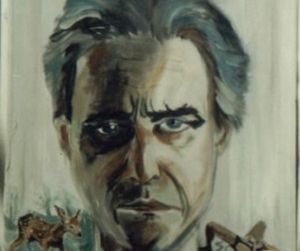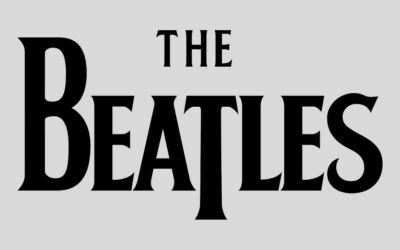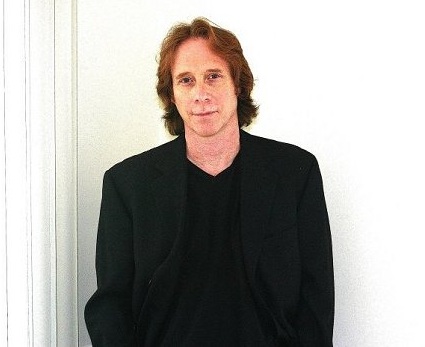By Harvey Kubernik c2016
On August 3, 1966, stand-up comedian, social critic, satirist, and philosopher Lenny Bruce was found dead at age 40 inside his Hollywood Hills home from an acute overdose of morphine. He died near where I sold newspapers and distributed admission tickets to The Preview House at the time. It was front page headlines in Los Angeles, and many folks in the neighborhood and around town were deeply saddened.
Fifty years ago this week over 500 mourners paid their last respects at Eden Memorial Park Cemetery in Mission Hills, California. Principal Eulogy 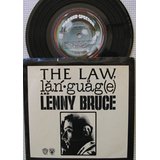 was read by Phil Spector who paid for the funeral.
was read by Phil Spector who paid for the funeral.
At least Lenny Bruce was not forgotten around Southern California after his 1966 burial. In August 1968, The Los Angeles Free Press presented a Murray Roman-hosted LennyBrucemas musical event at the Cheetah pier in Venice. Over 20,000 people attended.
Around Lenny Bruce’s freedom of speech advocacy, the lingering obscenity busts, and numerous arrests, Lenny’s bold stand-up comedy performances and public observations were not routines, but podium examples of unfiltered verbal reality coupled with reflections about race, religion and relationships.
Comedians over the last half century owe a tremendous debt to Bruce’s landmark comedy albums and Bruce-themed documentaries in various retail formats capturing his memorable legacy.
Earlier this decade, Shout! Factory released a 6-CD box set Lenny Bruce Let The Buyer Beware. 69 unreleased recordings, 10 never before heard selections from Bruce’s personal collection,
And, think about the current non-censored stand-up comedians and those who have toiled on the road for decades. Monologists, rap and performance artists continually booked and exposed before a live throng who spiel without any fear of repercussions for show language or ramifications of imprisonment impacting their careers.
In his memoir LIFE, Keith Richards writes about listening to Lenny Bruce albums as a teenager. “I thought from there I could get a thread to the secrets of the culture. He was my entrée into American satire.”
“I met Lenny Bruce in 1964, ’65,” recalled photographer and musician Henry Diltz, then a member of the Modern Folk Quintet. “We played some gigs together. MFQ did a week opening for him. And Lenny said marijuana, I call it God’s herb, would be legal one day because he knew too many law school students smoking it. We used to say, ‘Someday it will be legal. Because someday we’ll grow up and we will be the lawyers, judges and the senators.’”
I have talked and interviewed many musicians since 1971: Jim Keltner, Denny Bruce, Jack Nitzsche, Frank Zappa, Al Kooper, who as a sixteen-year old went to the recorded February 4, 1961 Lenny Bruce at Carnegie Hall midnight show, Ray Manzarek, Henry Diltz, Bob Dylan, who wrote “Lenny Bruce” on his Shot of Love album, Don Randi, John Mayall, who named checked Lenny Bruce in “Room to Move,” Steve Allen, Jerry Garcia, Keith Richards, Marty Balin, Paul Kantner, and Grace Slick, to name just a few. All of whom touted and praised the trailblazing path the outspoken counter-culture icon Lenny Bruce forged.
Before she joined Jefferson Airplane, Grace Slick was a member of the Great Society, and penned “Father Bruce,” a tune about Lenny.
“I saw Lenny Bruce a couple of times,” Slick recalled in a 2002 interview I conducted with her. “And he was fabulous. After he got into the trial segment of his life. The legal thing. He got so attached to that and it was tedious for other people because they weren’t as strung out, literally and figuratively, with the legal system. It wasn’t as interesting to people. So his performances during that time got somewhat tedious. But before that, the guy would hit all different kinds of subjects. He was just amazing.
“When I saw his album cover on Fantasy Records at a record store, where he was having a picnic in a graveyard, I had never seen any bashing of so-called sacred cows. Having a picnic in a graveyard. We are talking about the fifties. They just didn’t do stuff like that. It was “Leave It To Beaver” time. And ‘Father Bruce’ came out of that experience. Comedians very often are letting us know about morality through humor. That’s why I called him Father Bruce. They are preachers telling you what it’s like in society without being particularly dogmatic. It’s an easier way to swallow morality, listening to a comedian.”
I’ve also met many comedians, some with performance roots in the fifties and sixties, I once had wordsmith and stage and screen personality Rudy Ray Moore in my ’59 Cadillac.
Richard Pryor loved both the concept and reality of Lenny Bruce. First time I met Pryor was in 1974 at Pip’s Backgammon Club which later became a discotheque. Monti Rock III and Bob Crewe were in the room.
What an education I received as an invited listener hearing my dear friend Robert Marchese talk with his pal Pryor. Marchese won a Grammy for producing the 1968 Richard Pryor Live at the Troubadour for the Dove/Reprise label. Henry Diltz took the album jacket front cover photo.
Bruce was a frequent guest on black and white television shows I watched on my parent’s television set, In 1957 I saw the Teddy Bears, (Phil Spector, Marshall Lieb and Annette Kleinbard) on the local KTLA TV program Rocket to Stardom, sponsored by salesman Bob Yeakel, who used to hawk Oldsmobiles during the broadcast from his showroom. Lenny Bruce, Jack Sheldon, Dennis Hopper and Jim Keltner also appeared on the show.
During 1959-1976, my family and I would occasionally see Bruce, Sandy Baron, Mantan Moreland, Richard Pryor, Al Jarvis, Rodney Bingenheimer, Sonny Bono, Nik Venet, Micky Dolenz, and many comics, actors, actresses, directors, screenwriters, movie studio heads, prostitutes, pimps, bands, and Union 47 session musicians around town at the Hollywood Ranch Market and Canter’s Delicatessen. These venues were open 24 hours.
Playboy magazine first introduced me to the wit and wisdom of Lenny Bruce in the early sixties. 20 years ago I spent a delightful afternoon at the Playboy Mansion in Holmby Hills with longtime Bruce supporter Hugh Hefner, briefly reminiscing about his friend Lenny.
From 1966-1969 I attended Fairfax High School in Los Angeles. Lenny’s daughter Kitty, with wife Honey, was in my younger brother’s grade. Kitty is the Goddaughter of Phil Spector. I met Kitty again in 1972 when she had a graveyard waitress shift at Shipp’s restaurant on La Cienega.
In 2014, Brandeis University acquired the personal papers of Lenny Bruce from a collection kept by Kitty Bruce. It houses photographs, news clippings, recordings, manuscripts and other material. A generous gift from the Hugh M. Hefner Foundation made the transfer possible.
Lenny Bruce really made a big impression on writer Paul Krassner, publisher of the satirical magazine The Realist since 1958. In the mid-nineties Krassner Simon & Schuster published his autobiography Confessions Of A Raving Unconfined Nut. Krassner’s literary career actually began at Mad magazine and writing for The Steve Allen Show. Paul had also edited Bruce’s autobiography How To Talk Dirty and Influence People. On August 2, 2016 the same book is being re-published by Da Capo Press in paperback, with a Preface by Lewis Black and a Foreword from Howard Reich.
During 2004 I interviewed Krassner. We addressed Lenny Bruce. Paul readily acknowledged that Bruce had influenced his written and stage work.
“Groucho Marx once called me Lenny Bruce’s successor. It’s like you are part of a myth and handed some kind of torch,” suggested Krassner. “The audience are your peers, not your inferiors. And a lot of performers treat them like that. When Lenny Bruce would meet people, he wouldn’t do shtick, he would ask questions and learn. And them sometimes that would become part of his act; the dialogue that ensued. Lenny’s exact words were: ‘I am part of everything I indict.’
“He made it a point to try to never get a laugh because of a four-letter word. He’d be doing a character and for that aptness of character, he would use the language or he would analyze the language. Many comics today get their laughs with profanity, on the beat,” he continued.
“I was just at the Montreal Comedy Festival. 350 stand-up comics and the janitor had to come up on-stage to sweep the dick jokes off the stage. But there were a few that shone out in the midst of it.
“I learned a great deal from Lenny. When I first started performing, I was billed as Paul Maul, and he told me to use my real name. I learned compassion from him. He would take things from the point of view of the villain, you know, and carry it to the ultimate. He had empathy for all points of view. It didn’t necessarily get laughs, but he became a communicator, not just a comedian,” Krassner reinforced.
“When I first met him in 1959, Lenny would come out with a newspaper headline, or he’d play ‘Spanish Harlem’ from a record when he came on stage. He would do ‘show and tell’ things like that. Later on, it happened to be his legal briefs that he would be doing. I started off with an envelope of press clippings and I would just go off on that. And after a while, I dropped the clippings.”
Phil Spector is the co-writer with Jerry Leiber of “Spanish Harlem.” A favorite song of Senator Robert F. Kennedy, who sang it live with Roosevelt Grier on guitar during his 1968 Democratic Presidential campaign. Spector once played a game of pool with Senator Kennedy at The Factory Club.
“Mike [Stoller] had a couple of requests from lyric writers,” Jerry Leiber mentioned to me during a 1999 interview. “And he did some, like Bert Berns came to Mike. And I would try to keep our people; I didn’t want them to think I was blowing them off, that they were not good enough. I did one with Phil Spector, ‘Spanish Harlem.’ I did one, ‘Down Home Girl’ with Artie Butler, who was a sweetheart. I did it with a couple of people. Some of ‘em turned into good songs, some of them never saw the light of day. But I’d write one song with them.”
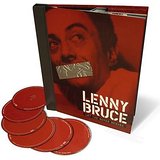 Decades ago Spector released an album on Lenny Bruce called The Law, Language and Lenny Bruce. It was recorded the night before his death and is an intensely educational experience. Phil’s office sent me an advance copy of the LP in the mail.
Decades ago Spector released an album on Lenny Bruce called The Law, Language and Lenny Bruce. It was recorded the night before his death and is an intensely educational experience. Phil’s office sent me an advance copy of the LP in the mail.
Jerry Wexler, the former Atlantic Records executive and noted record producer, penned the liner notes to The Law, The Language and Lenny Bruce.
Just before his death a few years ago, Jerry and I talked on the phone for some liner notes I was doing for the first-ever CD release on Water Records of Allen Ginsberg’s 1965 live Kaddish album recorded at a hall on the Brandeis University campus which Wexler had originally issued on Atlantic. We chatted about Allen Ginsberg, his two album productions with Bob Dylan, and I asked Jerry to comment on Phil Spector for a profile I was doing on Phil for Goldmine magazine.
In 1961, when Spector was based at Atlantic Records, he co-produced with Wexler the first version of “Twist and Shout,” a Bert Berns song on the Topnotes.
The next year Berns went in the studio himself and produced it again with the Isley Brothers. The Beatles consequently copied their version from that record.
“I’m still very fond of him,” admitted Wexler. “All of Phil’s aggressions and talents were apparent to us at Atlantic [Records] when he was a kid. He was brash, cocky and talented. A pop genius like Jerry Leiber.
“I respect Phil. He could do it all. The song and the recording existed in his brain. Phil’s records were made in his head before he even entered the recording studio. When Phil went into the studio, it came out of him, like Minerva coming out of Jupiter’s head. Every instrument had its role to play, and it was all prefigured. The singer was just one tile in this intaglio.
“How could I later argue with the results and success when Phil really became a record producer with his Wall of Sound and his studio mesh of instruments? Although I like records with more definition,” Wexler merrily confided.
“Phil was born on Christmas Day in 1940,” posed Los Angeles-based Daniel Weizmann, who authored A History Of Rock. “But I see him as the first truly post-Holocaust American Jew. He refused to grovel and play the Borscht Belt guy, the entertainment guy. And yet he had one foot in that old world grandiosity. His music was for the new utopian free-spirited teenagers, but it also contained the secret mania of having grown up with the shadow of genocide and the bomb. He meant business. In a way, he is the link between Lenny Bruce and Bob Dylan. Once Phil planted the seed, the Sixties just had to happen.”
In a 1976 interview I did with Fairfax High graduate Phil Spector for Melody Maker inside his Beverly Hills mansion, we discussed Lenny Bruce. Spector’s heroes include Malcolm X, Lenny Bruce, Paul Robeson and Muhammad Ali.
“My graduating theme was ‘Daring To Be Different,” Phil announced. “The moment I dared to, they called me different. I always thought I knew what the kids wanted to hear. They were frustrated, uptight. I would day no different from me when I was in school. I had a rebellious attitude. I was for the underdog. I was concerned that they were as misunderstood as I was.
“Lenny Bruce is a star but they won’t bring him back like they did with Chaplain. Lenny was my brother,” he stressed. “He was one of the greatest people who ever lived. One of the greatest philosophers who ever lived. I was fortunate enough to know great people to be inspired to do things.
“I refer back to Lenny a lot. I believe he played a great part in my life. You know, he was misjudged, mistreated and misunderstood. To say he died for Deep Throat is bull. Lenny was murdered!”
I was very fortunate to know and interview for a few of my books, the influential deejay Dave Diamond a monumental rock ‘n’ roll fixture on the Southern California airwaves 1965-1967.
Initially on AM radio stations KHJ, KBLA and KFWB, Diamond in 1965 had a KHJ 6:00 pm slot, following the legendary Real Don Steele that helped launch the game-changing Boss Radio format.
During a 2004 email exchange, before he died, Diamond offered some wonderful escapades with travel companion Spector when Phil took him to see Lenny Bruce in the Bay Area.
“In 1965 I had been brought in at the KHJ radio station to kick off a brand new radio format called Boss Radio that had been the brain child of Bill Drake. I did the 6-9 p.m. show. We went to #1 in six weeks. My show was very popular and I was hired to do a couple of night club gigs, talent contests, at the Crescendo club on Sunset strip that entrepreneur and GNP Crescendo record label founder Gene Norman had just owned. It was now known as The Tiger Tail.
“Then Phil started coming to my night club shows in his limo, hanging out incognito in the back and watching the talent, most of it bad…but these were good Hollywood nights, circa 1965. Phil had already made his millions, was 25 or 26, and living in the Woolworth mansion up above Sunset. I was invited over.
“Phil became a regular at these talent shows, and the shows and parties that took place at his mansion afterwards.
“Then my friendship with Phil took on a more personal dimension. We’d cruise around in his limo and go for Pink’s hot dogs.
“One Sunday Phil calls and asks if I wanna go see Lenny Bruce, the midnight show at the Basin Street West in San Francisco. It was about 8:00 p.m. and he said we could make the midnight show if we caught a United flight at 9:00 p.m. Which we did.
“We made the Lenny Bruce show after having a drink with [deejay] Tom Donahue whom we met in the bar. Lenny of course was sliding downhill at that point, and his show consisted of him in jeans, lumber jack boots, and a newspaper, from which he quoted and tried to make political comments with humorous kickers. It really wasn’t working, the place was fairly empty.
“Phil and I had cocktails and coffee, and Phil and Lenny talked business for a few minutes. One could see Phil did love Lenny and wanted to help him. We were back on the plane for L.A. around 9:00 a.m. the next morning.
“Well, finally I get fired from KHJ. I’d been there almost a year. I did not fit in and could not play that game they had structured. This worked out well for I ended up doing The Diamond Mine at KBLA in Burbank, which was probably the most memorable radio show.
“I think Phil became interested in me because of the new and different music I played on KBLA-like Love, Doors, Seeds, and the Stones. I think I intrigued Phil, as did this music, because it was so different than his or the stuff from the ‘50s he grew up with,” underscores Diamond.
“I got busy to make my show on KBLA stand out on a small station against all the biggies, and broke many a hit. I spent any and many a night cruising in the limo with Phil listening to new sessions he was working on (he liked to hear his stuff on car radios, the way the kids would hear it).
“But while I was at KHJ, # 1, everybody wanted to suck my time, record men, room guys, artists, man my phone never stopped ringing. But when I got fired that phone went dead, except for a Sunday night the day after I had been canned. It was Phil.
“’Hey. Davy, whatcha doin’?’’ ‘Nothin’, Phil.’ He tells me he’s heard I’ve been fired. I told him this was true. He said, ‘I’m comin’ over in the limo.’ He comes over with the bodyguards to my little pad on Clarinda in Hollywood, and he picks me up.
“We drive to Pink’s, load up on the hot dogs, and drinks, and we drive around. I told him I really didn’t know, but that in radio things happen fast and sometimes for good or no reason, and usually the talent involved never knows, but I knew the format was too tight for me and I thought it inhibited me.”
Just about the time the Beatles were preparing Sgt, Pepper’s Lonely Hearts Club Band, Lenny Bruce is one of the faces shown on the front cover, Spector, the future producer of the Beatles’ Let It Be, veered away from recording studios, and Diamond headed to Northern California.
“Once I left for San Francisco, we drifted apart. I did send him a glowing letter about ‘River Deep, Mountain High,’ and he sent me a gracious reply.
“I later went back to work at RKO in San Francisco, where they gave me a little more slack and I tightened up and held # 1 rating at KFRC radio for four years.
“I can truthfully say that in all my dealing with him he was a friend, a peaceful man, a gentleman. He was meek, tender, an incredible talent.”
Drummer Hal Blaine was booked on the “River Deep, Mountain High” session. In the mid-fifties, as Harold Simon Belsky, he did gigs with Lenny Bruce in San Bernardino at a club called The Magic Carpet.
Keyboardist Don Randi, and author of You’ve Heard These Hands, was also on Spector’s “River Deep, Mountain High” date at Gold Star studio.
Randi had opened for Lenny Bruce in the fifties in Los Angeles at the Cloister on Sunset Boulevard and hung out in the wings watching the action. Randi had grown up in the Catskills and seen all the great traditional comedians who headlined in the mountain venues.
In his book, Randi writes, “The audience was a large group of ladies sitting at tables from a Hadassah [Jewish women’s society]. I don’t know why they chose to have their social event at a Lenny Bruce show. I don’t think any of them laughed at the raunchy material. They might have been shocked or didn’t really understand his material. But the guys and I were in stiches laughing so hard.”
A few years earlier, Randi had been employed as a stock boy at California Records Distribution. The company was distributing the Contemporary, World Pacific, Prestige, Riverside, and Blue Note labels and handled the Fantasy Records catalog, who often pressed their records on clear red vinyl. Randi was already a Lenny Bruce fan and loved Bruce’s work on Fantasy.
“Fantasy was my label,” Randi explained to me at a 2015 engineering awards function in Culver City at the Sony Pictures Studios. “His records made me laugh. I loved the ‘Religions, Inc.’ story. As a young guy with CRD, I took Lenny Bruce on a day-long promo tour, driving owner Jack Lewerke’s Austin Healey convertible, schlepping Lenny to radio stations and then to record stores. I took him to 105.1 FM radio station and a couple of record stores. He was a good-looking guy. The girls went gaga over him. He was very cool and a chick magnet.
“I wrote a commercial for Zeidler and Zeidler, a men’s clothing store that Lenny read the copy to my underscore. They never used it. I used to have coffee with his mom, Sally Marr at Schwab’s drugstore on the Sunset Strip in the sixties. Lenny was ahead of time for his style of comedy. True genius.”
And one more memory of Lenny Bruce, courtesy of record producer and artist manager Denny Bruce, who in 1965 as a drummer worked with Frank Zappa and at the time had an interesting encounter one very late evening with Lenny Bruce, Zappa and Phil Spector at Canter’s Delicatessen.
Denny emailed me on the first day of August 2016.
“Frank Zappa had the feeling that perhaps Phil Spector could appreciate what the Mothers stood for, on all levels. The band had been turned down already by most of the L.A. labels, all of whom were ‘majors.’ We had Elliot Ingber on lead guitar. Phil knew him from high school and earlier played with him.
“Frank saw Phil as an indie label guy, who was doing well with his own label, making hits. And, looking at his track record, not to mention the Rolling Stones, he would be open to get into business with us.
“I think it was Herb Cohen who talked to Phil about meeting with Frank and seeing what happens. A meeting was set up for 2:30 a.m. at Canter’s Deli, on Fairfax. Frank wanted to me to come and keep him company. We are a little early, have some coffee, and now it is 3:00 am. Frank said ‘I wasn’t expecting him to be on time!’ Maybe 3:20 a.m. we see Phil walking in, and he has Lenny Bruce with him.
“We had heard that Phil had been helping Lenny out, financially, as by now he was broke, and nobody would hire him. Lenny looked pale and tired. He had a big blue ‘law book’ and a legal pad. So it’s the four of us is a booth for four, under the bright lights of Canter’s. A waitress who looks like she has worked there all of her life asks if we need menus. No, we will order.
“Lenny goes straight into opening his law book and says ‘Dig this silly shit!’ Now he is reading about another case that is somewhat similar to what he is going through. Fifteen minutes later he is still reading aloud, and writing things down.
“Frank finally says ‘Hello, I am Frank Zappa. It is a pleasure both of you are here.’
“Lenny looks at me and says, ‘and who are you?’
“I said ‘Denny Bruce.’ He laughs real loud. He says ‘C’mon, what is your real name?’
I responded ‘Dennis Bruce.’ He loves it, and tells the story of how he had to change his name for ‘showbiz’ reasons, from Leonard Schneider, and needed something ‘Goyim,’ so he could get dates in the Midwest. He picked Bruce out of the sky.
“Needless to say, it was hard to ask him to be quiet, as this is a business meeting. But on the other hand, it felt like Phil wasn’t ready to say ‘What kind of deal are you guys looking for?’ And, it just kind of ended without any business mention at all.
I walk out with Frank to his Chevy station wagon, and he looks at me and says ‘Is Denny Bruce your real name?’ I said ‘Yes!’
Zappa shrugged, ‘I was under the impression you changed your name as a tribute to Lenny Bruce!’”
(Harvey Kubernik has been a music journalist for over 44 years and is the author of 8 books. During 2014, Harvey’s Kubernik’s Turn Up the Radio! Rock, Pop, and Roll in Los Angeles 1956–1972 was published by Santa Monica Press.
In September 2014, Palazzo Editions packaged Leonard Cohen: Everybody Knows, a coffee—table—size volume written by Kubernik, currently published in six foreign languages. BackBeat/Hal Leonard Books in the United States.
Harvey and Kenneth Kubernik wrote the text for photographer Guy Webster’s award-winning first book for Insight Editions published in November 2014. Big Shots: Rock Legends & Hollywood Icons: Through the Lens of Guy Webster. Introduction penned by Brian Wilson.
In March, 2014, Kubernik’s It Was 50 Years Ago Today The Beatles Invade America and Hollywood was published by Otherworld Cottage Industries.
In November of 2015, Back/Beat/Hal Leonard published Harvey’s book on Neil Young, Heart of Gold).
During 2017, Sterling will publish Harvey Kubernik’s 1967 Complete Rock Music History on the Summer of Love).




